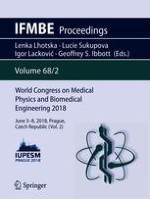2019 | OriginalPaper | Buchkapitel
Split-Belt Treadmill to Study Reactive Responses to Unexpected Gait Perturbation
verfasst von : Slavka Viteckova, Patrik Kutilek, Veronika Kotolova, Radim Krupicka, Zoltan Szabo, Jan Kauler, Jan Hybl
Erschienen in: World Congress on Medical Physics and Biomedical Engineering 2018
Verlag: Springer Singapore
Aktivieren Sie unsere intelligente Suche, um passende Fachinhalte oder Patente zu finden.
Wählen Sie Textabschnitte aus um mit Künstlicher Intelligenz passenden Patente zu finden. powered by
Markieren Sie Textabschnitte, um KI-gestützt weitere passende Inhalte zu finden. powered by
